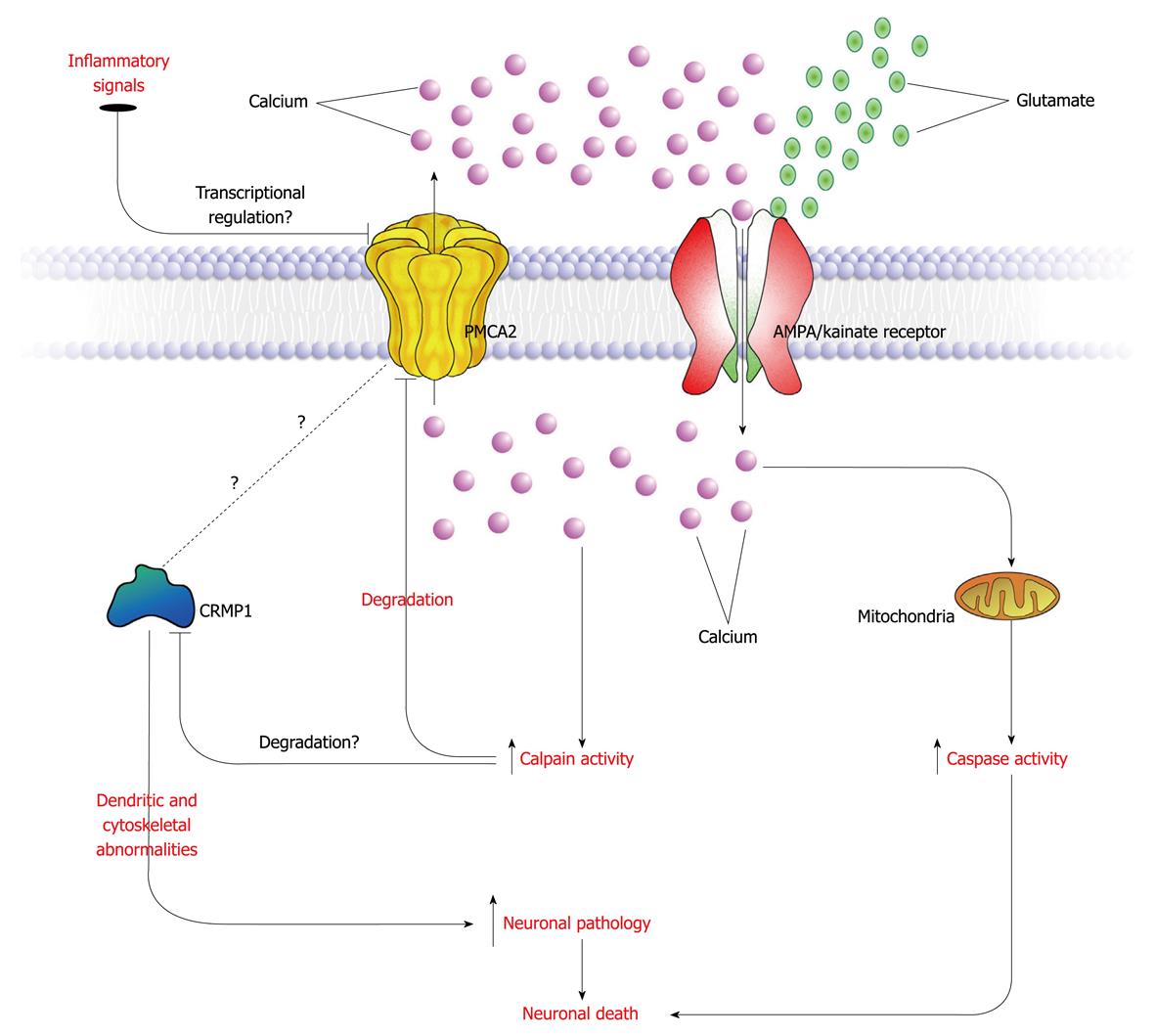Copyright
©2010 Baishideng Publishing Group Co.
World J Biol Chem. May 26, 2010; 1(5): 103-108
Published online May 26, 2010. doi: 10.4331/wjbc.v1.i5.103
Published online May 26, 2010. doi: 10.4331/wjbc.v1.i5.103
Figure 1 Putative mechanism underlying plasma membrane calcium ATPase 2 (PMCA2)-mediated neuronal damage in the spinal cord during experimental autoimmune encephalomyelitis or after spinal cord injury.
Excess glutamate in the affected spinal cord binds neuronal α-amino-3-hydroxyl-5-methyl-4-isoxazole-propionate (AMPA)/kainate receptors and initiates calcium influx. Inflammatory signals, released by activated glia or invading cells down regulate PMCA2 transcript levels attenuating calcium extrusion. The increased intracellular calcium levels activate proteases such as calpain and apoptotic mechanisms. Calpain-mediated degradation of PMCA2 further reduces PMCA2 levels. Decreased PMCA2 causes a decline in collapsin response mediator protein 1 (CRMP1) levels by mechanisms that are not yet identified. Changes in CRMP1 levels result in neuronal pathology leading to cell death.
- Citation: Fakira AK, Elkabes S. Role of plasma membrane calcium ATPase 2 in spinal cord pathology. World J Biol Chem 2010; 1(5): 103-108
- URL: https://www.wjgnet.com/1949-8454/full/v1/i5/103.htm
- DOI: https://dx.doi.org/10.4331/wjbc.v1.i5.103









